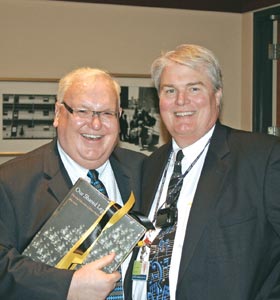Second Life Provides Hands-on Experience Without the Worry
by Jon Eichberger
Virtual 3-D technology is the latest, state-of-the-science instruction method preparing Johns Hopkins nurses for leadership. The technology, called Second Life, provides simulation scenarios, enabling faculty and preceptors to practice real-life situations on virtual “patients” and “nursing students” without the anxiety of working with actual human beings.
A $664,000 grant from the Nurse Support Program II over the next three years allows the Johns Hopkins University School of Nursing, in collaboration with The Johns Hopkins Hospital (JHH), to develop and test six, online, self-paced core clinical faculty/preceptor modules. These modules, expected to be completed by June 2012, will examine preceptor foundations, communication, clinical reasoning, educator challenges, and the creation of a caring culture. Between June 2012 and June 2014 the modules will be implemented, tested, evaluated, and eventually incorporated into the orientation schedules of nursing schools and hospitals across the country.
School of Nursing assistant professor, Sarah “Jodi” Shaefer, PhD, RN, is the lead investigator, along with co-investigators Pamela Jeffries, PhD, RN, associate dean for academic affairs, and Leah Yoder, MSN, RN, JHH’s assistant director for nursing education. “Simulation has been used to train and instruct several high-risk occupations, so it stands to reason that nurses would incorporate that technology to teach our teachers,” says Shaefer. “It also affords faculty the opportunity to experience various learning situations.”
Once the Second Life simulation is operational, faculty and preceptors will have avatars (virtual representations of themselves) and will be able to immerse themselves in a variety of learning scenarios.
“Right now, hands-on virtual instruction is still a novelty to most people. We want to change that dynamic by expanding its use and making exceptional technology a standard instruction tool,” Shaefer notes.
 Best of On The Pulse 2023
Best of On The Pulse 2023 a little over half way through the semester!
a little over half way through the semester! Faculty, Student, and Staff News
Faculty, Student, and Staff News Tension Within Me
Tension Within Me







